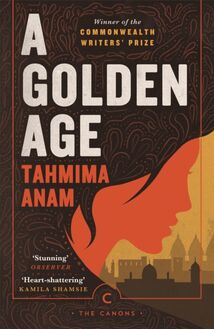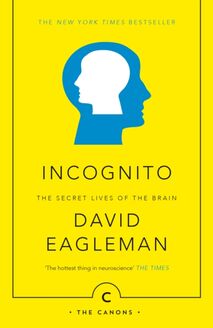Kidnapped , livre ebook
194
pages
English
Ebooks
2010
Vous pourrez modifier la taille du texte de cet ouvrage
Obtenez un accès à la bibliothèque pour le consulter en ligne En savoir plus
Découvre YouScribe en t'inscrivant gratuitement
Découvre YouScribe en t'inscrivant gratuitement
194
pages
English
Ebooks
2010
Vous pourrez modifier la taille du texte de cet ouvrage
Obtenez un accès à la bibliothèque pour le consulter en ligne En savoir plus
Publié par
Date de parution
01 juillet 2010
Nombre de lectures
1
EAN13
9781847674432
Langue
English
Publié par
Date de parution
01 juillet 2010
Nombre de lectures
1
EAN13
9781847674432
Langue
English
R OBERT L OUIS S TEVENSON
KIDNAPPED
Preface by Louise Welsh
Edited, with an Introduction and Notes, by Barry Menikoff
CONTENTS
BIOGRAPHICAL NOTE
PREFACE BY LOUISE WELSH
EDITOR’S INTRODUCTION
A NOTE ON THE TEXT
MAP
KIDNAPPED
NOTES
GLOSSARY
PREFACE
Louise Welsh
There is a photograph of Robert Louis Stevenson taken in 1889, which shows him balanced barefoot on the bowsprit of the schooner Equator , beside a crew of "tarry sailors" on his way to the Gilbert Islands, 1500 miles southwest of Hawaii. He is long-haired, whip-thin and smiling. Despite his frequent illnesses, Stevenson did not merely write about adventures and travel on the high seas, he experienced them. Stevenson’s occasionally feverish energy, zest for life and humour infuse the adventures of Kidnapped ’s narrator, David Balfour, and his unlikely comrade-in-arms, the Jacobite Alan Breck. As a contemporary review noted, these adventures are,
of a stirring kind, and include a voyage, a shipwreck, and a good deal of wandering through the Highlands, together with a reasonable mixture of bloodshed. 1
These elements of plotting must have delighted the readers of Young Folks Paper which serialised the first publication of Kidnapped in 1886, but the novel goes beyond what is required of a mere adventure story. It is a highly personal book, drawing on Stevenson’s own travels and experiences of Scotland, his interest in the history of the country and his fascination with dualism, forged partly through his experiences of Presbyterianism. Kidnapped is never parochial, but it is a very Scottish novel. And although Stevenson was never able to capture the voice of a Highlander, part of this Scottish identity comes from his use of vernacular Scots. Stevenson believed that,
The day draws near when this illustrious and malleable tongue shall be quite forgotten; and Burns’s Ayrshire, and MacDonald’s Aberdeen awa’, and Scott’s brave metropolitan utterances will all be the ghosts of speech. Till then I would love to have my hour as a native Maker, and be read by my own countryfolk in our own dying language. 2
Kidnapped is in part an expression of this ambition. Stevenson wrote to Charles Baxter, to whom the book is dedicated,
it’s Sc tch: no strong, for the sake o’ they pock-puddens, but jist a kitchen o’t, to leeven the wersh, sapless, fushionless, stotty, stytering South Scotch they think sae muckle o’. 3
Kidnapped is also, at least in the beginning, part fairytale. Our narrator, the recently orphaned David Balfour, sets off for the House of Shaws in search of his inheritance. The circumstances are sad, but as David leaves his father’s tied cottage for the last time the weather, always a significant factor in this novel, suggests hope and new beginnings.
The blackbirds were whistling in the garden lilacs, and the mist that hung around the valley in the time of the dawn was beginning to rise and die away. 4
This sense of optimism fades as David nears Cramond and begins asking directions from locals. "Well, mannie," says a carter, "… ye seem a decent-spoken lad; and if ye’ll take a word from me, ye’ll keep clear of the Shaws." 5 "Hoot, hoot, hoot," said the Barber, when asked what kind of a man was Mr Balfour of the Shaws, "nae kind of a man, nae kind of a man at all." 6 But it is the "eldritch" Jennet Clouston who, like an evil witch at a highborn christening, foretells the trials that David will face before the book’s end.
"That is the House of Shaws!" she cried. "Blood built it; blood stopped the building of it; blood shall bring it down. See here!" she cried again, "I spit upon the ground, and crack my thumb at it. Black be its fall! If ye see the laird, tell him what ye hear; tell him that Jennet Clouston has called down the curse on him and his – house, byre and stable, man, guest and master, wife, miss or bairn – black, black be their fall!" 7
When we do meet the laird it is from the wrong end of a blunderbuss. Ebenezer Balfour greets David through the sights of the gun with the welcoming words, "It’s loaded."
Henry James considered Stevenson a "bright particular genius" 8 and Kidnapped his "best book" at the point of writing, but he was impatient with David’s long lost uncle, describing Ebenezer as one of Kidnapped ’s "two flaws" and "the tricks he plays on his ingenious nephew … a little like those of country conjurers". 9
There is indeed something of the pantomime villain about David’s uncle and his energetic miserliness. Though the night is "pit murk" Ebenezer swears that the moon is out, for the sake of saving a candle. When David shames his uncle into offering him a drink, the old man halves his own portion, pouring it from his own glass rather than take more than the day’s allotted allowance. But the comic elements in the old man’s character do more than simply make us smile, they incline the reader towards Ebenezer, casting him as "Steptoe" to David’s "Son". His sprightly meanness and spirited turn of phrase add to the horror of his first act of wickedness. David is sent by his uncle up the old stair tower at the end of the unfinished wing. Once again Ebenezer insists that David does without a candle – "Nae lights in my house" – reassuring him that the stairs are good. But when David enters the tower he finds it,
… so dark inside, it seemed a body could scarce breathe; but I pushed out with foot and hand, and presently struck the wall with the one, and the lowermost round of the stair with the other. The wall, by the touch, was of fine hewn stone; the steps too, though somewhat steep and narrow, were of polished masonwork, and regular and solid underfoot. Minding my uncle’s word about the bannisters, I kept close to the tower side, and felt my way in the pitch darkness with a beating heart.
The house of Shaws stood some five full storeys high, not counting lofts. Well, as I advanced, it seemed to me the stair grew airier and a thought more lightsome; and I was wondering what might be the cause of this change, when a second blink of the summer lightning came and went. If I did not cry out, it was because fear had me by the throat; and if I did not fall, it was more by Heaven’s mercy than my own strength. It was not only that the flash shone in on every side through breaches in the wall, so that I seemed to be clambering aloft upon an open scaffold, but the same passing brightness showed me the steps were of unequal length, and that one of my feet rested that moment within two inches of the well. 10
This is a gothic moment worthy of the author of The Strange Case of Dr Jekyll and Mr Hyde . Stevenson has set the scene with an unscrupulous uncle, a stormy night and a threatened bloodline, we expect some event, but the previous comedy does not suggest it will be the attempted assassination of David by his only remaining relative. Gothic is a genre of sensation, and the close description of David’s climb up the tower makes us feel the moment, the seeming solidness of the structure the "fine hewn stone" and "polished masonwork", the air on our face. But this is more than mere sensationalism, it is a moment of realism in a previously enjoyable but unreal tale. The step David almost takes into nothingness is all the more shocking for this contrast of style and tone. The description of "the open scaffold" anticipates later jeopardy and reinforces the knowledge that had David fallen, his fate would have been death. Ebenezer’s subsequent cowed attitude is unconvincing, it’s clear that he will make a second attempt to rid himself of the boy, and this anticipation adds another ring of tension to the tale.
The image of the lightning bolt suddenly flashing into the high and ruined tower, revealing the danger ahead and thereby saving young Davie recalls the Stevenson family profession – lighthouse engineering. This is the first of many instances where Stevenson’s experiences formed during an abortive apprenticeship to the family firm shine out from Kidnapped .
Robert Louis (pronounced Lewis) Stevenson was born in 1850 in Edinburgh to Thomas and Margaret Stevenson. Thomas was the head of the family firm and intended Louis to take his place. It was no mean objective. The writer was eventually to become,
… the most famous of the Stevensons, but he was not the most productive. Between 1790 and 1940, eight members of the Stevenson family planned, designed and constructed the ninety-seven manned lighthouses that still speckle the Scottish coast, working in conditions and places that would be daunting even for modern engineers. 11
In retrospect, Thomas’s desire for his son to become a key part of the family firm seems a strangely unrealistic ambition for such a practical man. Louis was plagued by ill-health throughout his life, and even had his inclinations lain in that direction it is doubtful whether his constitution could have withstood the travails of the North Sea. He did, however, begin an apprenticeship, making several excursions on his own and accompanying his father on his 1869 annual tour of inspection, calling at Orkney, Lewis and Skye. The trip provided,
… plenty to fascinate Louis, but of a romantic, not a technical, nature. At Lerwick he heard all about tobacco and brandy smuggling, and at Fair Isle he saw the inlet in which the flagship of the Armada had been wrecked … the impressions that his engineering experiences (or rather the long observations of the sea and the Scottish coasts they afforded) made on him fuelled his lifetime’s writing. 12
Robert Louis Stevenson may have managed to avoid the rigours of lighthouse engineering, escaping into literature via a law degree (intended to appease his father), but he was as entranced by the sea as any of the Stevenson clan. Although his crossing to America a year after the publication of Kidnapped was in conditions that would have appalled most travellers, Louis proclaimed himself delighted:
The voyage was a huge success. We all enjoy














